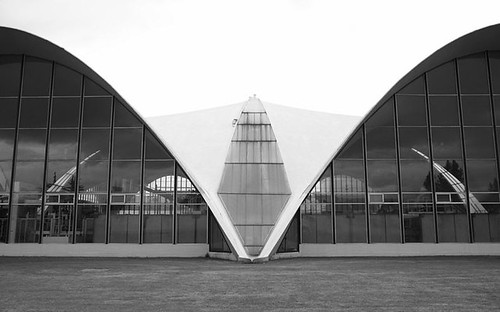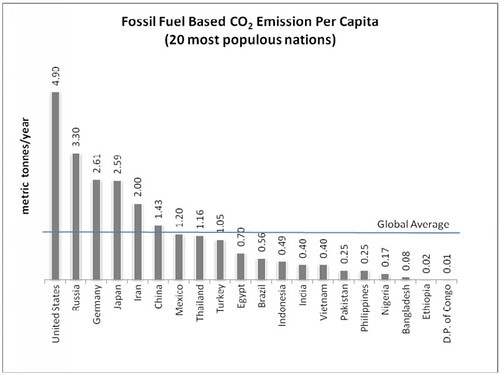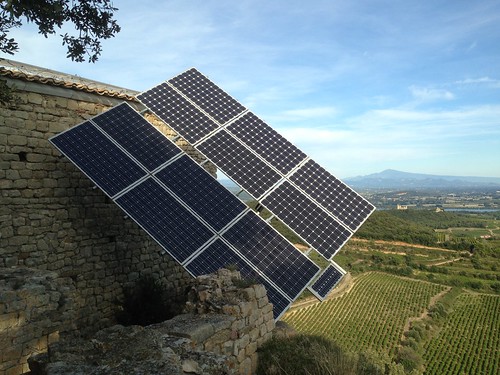A rule of thumb often stated within the building design community is that the structure accounts for approximately 50% of a building's life cycle embodied energy.
Author:
Terry McDonnell; Contributors: Frances Yang, Kate Simonen, Rebecca Jones
This
article examines three
main scenarios for the amount of embodied energy due to structure compared with
the entire building;
- Structural Embodied
Energy During Construction
- Structural Embodied
Energy Over Building’s Single Lifespan
- Structural Embodied
Energy Over Building’s Rebuilt or Repaired Lifespan
Structural Embodied Energy @ Initial Construction
There are numerous
studies of structural embodied energy during the initial construction
phase. The following is a brief summary
of those studies:
- In the embodied
energy study by Kofoworola and Gheewala shows that the concrete and steel
components of a 38 story reinforced concrete office tower in Thailand can be as
high as 71% of embodied energy of a building through construction. (Kofoworola 2007)
- In the embodied
energy study by Treloar et al shows that the concrete and steel components of a
15 story steel office tower in Australia can be as high as 90% of embodied
energy of a building through construction. (Treloar 2001)
- The international
building consulting firm Arup studied multiple pieces of literature and their
own building designs in order to gather a data set of embodied energy that was
bounded by “cradle to site”.
Calculations included all impacts of the extraction of the raw material,
factory production and delivery to site.
Their analysis shows two interesting points;
1) That the type of
structure is not changing the significance of structural contribution to
embodied energy. Figure 4.1 shows a
50%-60% contribution independent of building type
(Arup 2010).
2) That the structural
system may vary the contribution of embodied energy much more.
Figure 4.2 shows that the structural system selected
produces a range between 30%-60% of
structural embodied energy compared to the
entire building (Arup 2010).
Figure
4-1: Prepared by Arup (Kaethner 2012) Shows
embodied energy vs. type of building use.
Figure
4-2, Prepared by Arup (Kaethner 2012), shows
embodied energy vs. type of structural system.
Structural Embodied Energy Over Building’s Single
Lifespan
Going further, one can look at the percent of embodied energy (or sometimes embodied carbon) of the
structural materials throughout the entire life span of a building, including
all operational impacts. In most cases
this will reduce the structural related percent vs. the total, especially during very
long life spans. Most building designs
are benchmarked for 40-50 year life spans, but the exact amount is often
determined during conversations between the building Owner and design
team. The following are studies and analyses
performed in order to determine this value:
- An oft-cited study
by R. Cole and P. Kernan based on the Canadian construction industry estimates
that a 50,000 sft, 3 story office building using steel, concrete, and timber
structural systems still produces a 25% to 33% range of the building’s total
embodied energy. (Cole 1996)
- The carbon
consulting firm dcarbon8, in a more recent case study conducted in 2007,
calculated the total cradle-to-grave embodied carbon emissions (which are
indicative of embodied energy) attributable to a warehouse building’s structure
to be 57% of the total. (Werner 2012)
- A similar study performed by Fernandez, N. Perez goes in
depth to analyze an actual 55,000 sft, 6 story office building located in
Christchurch, New Zealand. Using the
actual concrete design, and alternates of steel and timber, the author
concludes that the life cycle structural embodied energy accounts for 30% of
the concrete and timber designs, and 44% within the steel design alternate. (Fernandez 2008)
- Taking an actual four
story, 80,000 sft office building located in Chicago, IL, a group of building
designers studied four different structural systems using two separate material
quantity calculations within the ATHENA EcoCalculator for the purpose of
determining the structural material embodied energy. By adding in non-structural components and
using TRACE 2000 energy model each design assuming a 50
year life span. The total embodied energy of the structure for this low rise building was
determined to be between 6%-10% of the total cradle to grave energy.
This is lower than expected but remains a significant amount. (Stek 2012)
Structural Embodied Energy Over Building’s Rebuilt or
Repaired Lifespan
Common practice in conducting an
environmental life-cycle assessment (LCA) on a building includes a
consideration of the impacts stemming from first construction of a building
through its life span. But in special
circumstances, such as buildings in earthquake prone locations, the repair of
damage or demolition and re-construction (sometimes referred to as multiple
lives) of a building may significantly affect the overall structural embodied
energy. A comprehensive LCA includes
impacts related to demolition but rarely includes the potential additional
environmental impacts that could stem from repairing or demolishing and
rebuilding a building after a natural disaster included in an LCA, if ever at
all. Methods are being developed to
include seismic performance in LCA analysis.
One such study by Degenkolb attempts to
include the affect of seismic systems within active earthquake locations in
order to achieve a more accurate sense of a building’s full life-cycle impacts. In this paper, an LCA study using the EnvISA
methodology is performed. This analysis
measures common structural unit costs rather than a straight LCA
inventory. Anticipated seismic losses
are then paired with the cost LCA database which forms the basis of EnvISA. Their conclusions show that a more robust
structural system can provide approximately 18% - 25% depending on the structural
system selected, and how well that system can limit damage to the
non-structural building elements over a 50 year life span. (Comber 2012)
The difficulty in all of the seismic evaluating studies is that they are
to date based upon proprietary software.
Without knowing more about the system, the data sets, assumptions,
inventories, boundary conditions, and actual measuring algorithm are different.
This brief paper shows that the often
quoted rule of thumb that the structural materials are 20% of the total
embodied energy is in reality subject to a lot of fluctuation. Most
cases presented show values higher than 20%. As modern energy codes continue to reduce the operational energy, the
percent of total embodied energy due to the structure will only increase. In addition, the high rise building type has
a much greater percentage of structural embodied energy out of the total. Studies show that in buildings over 200 feet high
(often times much more) the embodied energy can be 4 times or more of the
embodied energy percentage of a shorter sized building. (Kaethner 2012)
Therefore it is relevant and altogether prudent to continue measuring and
trying to decrease the environmental impact of structural materials.
References
Arup (2010) “Embodied Carbon Study:
Study of Commercial Office, Hospital and School buildings,” The Concrete
Centre, United Kingdom
Cole R., Kernan P. (1996) “Life-Cycle
Energy Use in Office Buildings”, Buildings and Environment, 31 (4): 307-317
Comber, Poland, & Sinclair (2012) “Environmental
Impact Seismic Assessment: Application of Performance-Based Earthquake
Engineering Methodologies to Optimize Environmental Performance”, Victoria
University School of Architecture, Wellington, New Zealand
dcarbon8 (2010) “Footprint Measurement
and Reduction Study for Development Securities”
Fernandez, N. Perez (2008) “The
Influence of Construction Materials on Life-cycle Energy Use and Carbon Dioxide
Emissions of Medium Size Commercial Buildings”, Victoria University School of
Architecture, Wellington, New Zealand
Hsu, S. (2010) “Life Cycle Assessment of
Materials and Construction in Commercial Structures: Variability and
Limitations,” Massachusetts Institute of Technology, Cambridge, Massachusetts
Kaether, Burridge (2012) “Embodied CO2
of Structural Frames”, The Structural Engineer.
Kofoworola, Gheewala (July 2007), “Environmental
life cycle assessment of a commercial office building in Thailand”
Stek, DeLong, McDonnell, Rodriguez (2012)
“Life Cycle Assessment Using Athena® Impact Estimator on Buildings: A Case
Study”, SEI Congress 2012.
TRELOAR, G. J., FAY, R., LLOZOR, B.
& LOVE, P. E. D. (2001a). Building
Materials Selection: Greenhouse Strategies for Built Facilities. Facilities, Vol. 19, No. 3/4,
pp,139 – 149
Werner, Burns (2012) “Qualification and
Optimization of Structural Embodied Energy and Carbon”, SEI Congress 2012.
Other papers to research
Seppo, J.; Horvath, A., and Guggemos, A. (2006) “Life-Cycle Assessment of Office Buildings in
Europe and the United States,” Journal of
Infrastructure Systems, March 2006 Issue.
CTBUH Journal, Tall Buildings and Embodied
Energy, 2009 Issue III



























